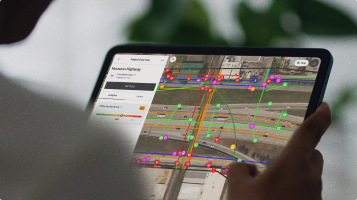Texas Utility Environmental Risk Report
Written by

Published on
August 21, 2025
.avif)

Table of contents
Introduction
Underground utility infrastructure plays a critical role in Texas’s environmental and public health efforts. Yet, despite its scale, spanning more than 1.4 million miles statewide, much of this infrastructure remains unmapped or poorly documented. This lack of visibility and incomplete asset management creates challenges for environmental risk management and compliance with evolving regulations. This is especially relevant in the case of utility lines made from high-risk materials that may be prone to failure and corrosion, or harmful to human and ecological health.
With such a large percentage of infrastructure hidden under an “unknown” label, the question is no longer if there are risks below the surface, but where they are. The unknowns themselves have become a risk. Identifying and closing this knowledge gap is critical to safeguarding Texas’s communities. Different materials carry different dangers—some corrode and then leak methane, others leach toxic substances into sewerage and drinking water—so any effective response must be material-specific and precise.
This report assesses environmental risks associated with legacy underground materials, with the assistance of 4M’s utility mapping platform, focusing on the segments where material data is currently available. However, as 4M continues to develop its platform, highlighting where material data doesn’t exist is just as important. By combining known infrastructure patterns, historical installation records, and geographic context, upcoming predictive models can help infer what lies beneath the surface—even in the absence of direct documentation.
Through preliminary target sampling in Houston, Dallas, and San Antonio, combined with known pipeline data in Texas and sector specific research, this report identifies high-risk pipe materials, evaluates where they are located and why they pose a great concern, and outlines clear recommendations for environmental risk mitigation and sustainable replacement. As 4M continues to expand its dataset and capabilities, its platform offers a powerful foundation for informed, environmental risk-driven decision-making across the state.
Methodology
This report was developed through a combination of data sampling, spatial analysis, and research based risk assessment, with a focus on identifying environmentally impactful utility materials in Texas.
Because material data is limited across much of the state, we began by sampling infrastructure records from three of Texas’s largest cities—Houston, Dallas, and San Antonio—using 4M’s utility mapping platform (shown below). These locations were chosen not only because they are among the largest and most data-rich urban areas in the state, but also to capture a range of sample sizes and infrastructure densities.
Dallas and Houston, with large mapped areas and over 140-250 miles of utility data each, provide insight into the risks associated with high-volume, highly developed infrastructure systems. San Antonio, with a smaller sample area (~50 miles), offers a valuable contrast—representing mid-sized or lower-density infrastructure patterns that are also common across Texas. Importantly, all three sample areas were entirely urban, focused on dense city centers rather than suburban or rural zones. This was intentional: urban areas tend to have older infrastructure, more concentrated utility corridors, and higher population exposure, making them more likely to pose significant environmental and public risks if failures occur. By concentrating the preliminary analysis in these zones, we prioritized the areas most likely to benefit from risk-driven intervention and modernization.
In total, the three cities provided over 440 miles of mapped utilities, spanning water, sewerage, electricity, communication, and energy sectors. This sample represents a significant portion of the state’s known materially labeled infrastructure, forming the foundation for broader statewide extrapolation. Within each sample, we analyzed the types of materials present, their associated utility sectors (i.e. water, sewer, gas), and their potential for environmental harm based on sector-specific failure risks. These cities were selected to represent a diversity of urban infrastructure systems and to capture patterns that may apply more broadly across the state.
Then, using 4M’s available material and sector data, we estimated statewide totals for each labeled pipe segment. All material types were reviewed and organized by sector, and known high-risk categories—including asbestos cement, bare steel, cast iron, clay, early plastics, and lead—were flagged for further analysis. In cases where material labels were missing or unclear, we relied on supplementary research, including historical installation patterns, known lifespan benchmarks, and EPA/TCEQ (Texas Commission on Environmental Quality) regulatory data, to assess likely risk.
Finally, recommendations were informed by the ASCE 73-23 Standard Practice for Sustainable Infrastructure, alongside federal mandates like the Lead and Copper Rule, and current state-level infrastructure initiatives.
Materials Overview
Texas’s underground utility network spans about 2.37 billion meters (or 1.47 million miles) including infrastructure that supports mainly potable water, reclaimed water, stormwater, sewerage, natural gas, electricity, and telecommunication. This network is vital to daily life and significantly impacts construction, so understanding the material composition of utility lines, specifically pipelines, is critical to understanding infrastructure resilience and long-term planning.
Out of all the pipelines in Texas mapped by 4M, only about 10.64% have a clearly identified material type. The remaining 89.36% are categorized as “null” or unknown, highlighting an additional opportunity for targeted inspection.
The table below summarizes the known pipe material composition across Texas. Percentages are based on 1.47 million miles of total mapped infrastructure.
Known Underground Pipe Materials in Texas
(See Appendix B for a full breakdown of materials within each category.)
Key Observations
Polymer materials dominate the identified infrastructure, making up 49.4% of all materially labeled utility lines and 5.26% of total mapped utility lines in Texas. These materials mainly appear across potable water, sewerage, stormwater, natural gas, reclaimed water, fiber optic conduits, and power sectors – reflecting their chemical resistance, flexibility, and cost-efficiency. Their use across high-volume systems (potable water, sewerage) and high-risk sectors (natural gas, hazardous materials) highlights the importance of ongoing monitoring, especially in older systems. Their dominance also reflects the fact that polymers are newer and more likely to be digitally logged, meaning that newer systems may be overrepresented among lines with material identification, compared to legacy materials that predate modern asset tracking.
Concrete materials account for 24.5% of all materially labeled utility lines and 2.61% of total mapped utility lines, likely reflecting their widespread and continued use in large-diameter applications such as stormwater drains, culverts, and older water mains. Their brittleness under load and potential for cracking at joints makes them a long-term maintenance concern, especially in high-flow environments.
Iron pipes make up 1.56% of all labeled pipe segments, concentrated in potable water and sewer sectors. While ductile iron has a long lifespan, legacy cast iron is prone to corrosion and failure, particularly in older cities like Dallas and San Antonio. Many of these pipes are nearing or exceeding their design life, which typically ranges from 50 to 75 years.
Clay pipe, though constituting just 0.68% of total mapped infrastructure, appears almost exclusively in sewerage systems, where its vulnerability to cracking and infiltration/exfiltration makes it one of the highest-risk materials still in active use.
Chemically bonded ceramic and fiberglass pipes are emerging or niche materials, appearing in less than 0.1% of mapped infrastructure. They are often more durable and corrosion-resistant; however, long-term field performance requires more testing.
The Unknown Gap
The total mapped ground infrastructure is approximately 1.47 million miles; however about 1.32 million miles of underground pipeline is not categorized. This vast “unknown” category represents one of the most critical blind spots in environmental risk assessment and long-term infrastructure planning.
Why So Much is Unknown
Much of Texas’s underground infrastructure, and most underground infrastructure in general, was installed before systematic documentation and digital utility mapping were standard practice. In older cities and rural towns, records were often handwritten, stored on paper, or lost during organizational changes. Some private utilities were installed without any documentation at all. Today, those pipes still serve homes and critical systems, but we may have no idea where they are or what they’re made of.
Materials like lead and bare steel are especially difficult to locate, as they were commonly installed in earlier eras and often omitted from modern records. Their presence poses serious environmental and public health concerns: lead lines, still widespread in pre-1980s neighborhoods, can contaminate drinking water, while bare steel pipes—used to transport natural gas and hazardous chemicals—are prone to corrosion and leakage.
The Impact of the Data Gap
With nearly 90% of pipelines unidentified in terms of material composition, it is not possible to determine how much of Texas’s infrastructure is built from environmentally risky materials. However, estimates can be inferred and projected from available data. Furthermore, it is a concern that materials like lead and bare steel may go unaddressed; even with aggressive EPA mandates, undocumented lines are likely to be overlooked.
Strategic Opportunity for 4M
This data gap also presents an opportunity. By enriching existing utility maps with material tagging (starting with high-priority sectors like gas, water, and sewerage), 4M can directly support EPA compliance for lead service line inventories, as required under the EPA’s proposed Lead and Copper Rule Improvements (LCRI), which mandate baseline inventory reports of all lead lines by 2027. 4M can use artificial intelligence models to create predictions to estimate material types based on year built, utility sector, and nearby confirmed materials.
With such a large percentage of infrastructure hidden behind an “unknown” label, the question is not if there are problems underneath the ground, it is where. Closing this data gap is essential to protecting human health, environmental ecosystems, and Texas’s infrastructure investment.
Environmental Risk Analysis
Why Pipe Material Matters
Underground pipes transport vital resources while interacting with the environment around them. When materials age, corrode, or crack, they can leak harmful substances into the soil and groundwater, which can disrupt natural systems and release toxic substances into drinking water. Evaluating environmental risk is key to understanding where the greatest threats exist and how to prioritize replacement when excavating.
Environmental risk in this report was assessed using three main criteria:
- Chemical and physical degradation of material (i.e. corrosion, leaching, breakage)
- Interaction with transported substances (i.e. sewerage, hazardous liquids)
- Historical installation and known lifespan (i.e. pre-1980s cast iron)
How Risk is Assessed
Environmental risk for underground utility materials was assessed using a structured, multi-factor approach. The evaluation focused not just on the material itself, but also on how it behaves over time, what it carries, and the environmental consequences if it fails.
- Chemical and Physical Degradation Behavior:
Pipes corrode, crack, or degrade depending on soil conditions, age, pressure, and material type:
- Corrosion of steel and cast iron causes rusting, pitting, and loss of wall thickness.
- Brittleness and cracking is associated with clay, early plastics, and fiberglass, and these are susceptible to fracturing or root intrusion.
- Asbestos cement and lead have the potential to release hazardous substances directly from the outside of pipes into the soil.
- Fiberglass can also begin to delaminate under pressure and stress.
- Sector-Based Exposure Risk:
Not all failures have the same consequence. Risk was scaled based on what the pipe carries and the impact of a leak:
- Sewerage → high risk of pathogen and nutrient release into soil and groundwater
- Natural Gas → high risk of explosion, methane emissions (GHG impact)
- Stormwater → high risk of polluted discharge
- Potable/reclaimed/irrigation water → lower environmental impact, so not taken into account
- Installation Era vs. Lifespan:
We used historical installation data and lifespan benchmarks to identify materials at or near end-of-life. For example:
- Cast iron and bare steel → typically installed pre-1970s, lifespan 50–75 years
- Asbestos cement → used from 1940s–70s, lifespan 50–70 years
- Clay → used into the 1970s, now 50–80+ years old and brittle
- Early plastic and fiberglass → known failure patterns, especially in 1970s–80s installations
Materials installed more than 40–60 years ago should be flagged for aging-related risk if still in service.
Breakdown of High-Risk Materials
Note: The percentages shown in the table below are calculated using only pipe segments with known material labels, which represent approximately 10.64% of the total utility infrastructure in Texas, or about 156,524 miles of pipe. The remaining ~89% of infrastructure consists of unknown or unlabeled materials and is not included in this analysis.
The table includes both environmentally high-risk and low-risk materials. Materials that do not pose a significant environmental risk are highlighted in gray for clarity. All materials are listed in descending order by their percentage of the known, labeled infrastructure.
In Texas, more than 25,400 miles of underground utility infrastructure are composed of materials classified as environmentally high-risk. This represents an estimated 16.27% of all materially labeled utility segments statewide. To calculate this percentage, the total mileage of these high-risk materials was then divided by the total known mileage of materially labeled utility infrastructure across Texas. The result: 25,400 miles out of approximately 156,200 known miles, or about 16%, are composed of materials that pose a heightened risk of environmental harm if damaged or left unmaintained.
The following breakdown highlights these materials, focusing on their total installed length, primary use sector, and expected life span, to prioritize where infrastructure investment and mitigation efforts should begin.
Asbestos Cement
Asbestos Cement (AC) pipes are composed of both Portland cement and asbestos fibers. Used most prominently from the 1930s to the 1970s, they are known for light weight, smooth interior, and resistance to corrosion.
Although AC pipes do not corrode like metal, they do degrade over time. As AC pipes age, their walls weaken, allowing for calcium to leach out to the surrounding area and asbestos fibers to be exposed. Asbestos itself is composed of silicate materials that are impossible to break down in the environment. They can easily splinter into needle-like fibers, and therefore can travel seamlessly by air, water, or dust.
In Texas, AC pipes make up 6.5% of known materials underground, making it the most commonly identified material. Texas uses AC pipes for stormwater and sewerage, so when asbestos cement pipes fail, they will result in hazardous liquids leaking into soil and groundwater. Removing and replacing AC material is especially dangerous for workers and surrounding communities. When these pipes are cut or broken, they can release microscopic airborne asbestos fibers, posing severe health risks like lung cancer. AC pipe removal requires highly controlled procedures, including certified hazardous material handling teams and specialized personal protective equipment (PPE).
Additionally, all removed pipe segments must be treated as regulated asbestos-containing waste, which is expensive to dispose of and often must be transported to special landfill facilities. This makes AC not just an environmental concern during its lifespan, but also an expensive and long-term liability for municipalities and utilities trying to upgrade aging infrastructure safely.
Clay (All Types)
Clay (mainly vitrified) pipes have been a mainstay in sewer systems since the late 19th century due to their resistance to chemical corrosion, as sewerage does not dissolve the clay as it passes through. Clay’s weakness, unlike metal and AC pipes, consists of mechanical brittleness and joint integrity. Clay pipes are usually made of small segments pieced together, and over time, these joints are prone to separating. Additionally, clay is a porous ceramic: tiny rootlets from trees are famously able to penetrate joints or even small cracks in the pipe in search of water. Those roots then grow, prying joints apart and causing cracks to widen.
In Texas, clay pipes make up approximately 6.38% of all known material-labeled infrastructure, appearing primarily in sewer and stormwater systems. If clay sewer lines crack or fail, sewage leaks into the ground, contaminating the soil and possibly groundwater. Old clay sewers allow a lot of infiltration of rainwater or groundwater into the sewer network. This can be an environmental issue because it leads to sanitary sewer overflows—during storms, excess clean water entering through cracks can overwhelm treatment plants or sewer capacity, resulting in overflows of diluted sewage into rivers. Many cities identify deteriorated clay pipes as a major contributor to inflow/infiltration problems.
Bare Steel (and Other Prominent Types of Steel)
Many existing steel pipelines for hazardous liquids (crude oil, refined fuels) and gas transmission were laid in the 1940s–1970s. In the early period, coatings and anti-corrosion measures were less advanced: pre-1970 pipelines might have coal tar enamel or asphalt coatings, or in some cases no coating (uncoated pipes are termed bare steel). Cathodic protection was gradually adopted in the mid-20th century. The expected lifespan of well-coated, protected steel pipe can exceed 70 years, but unprotected steel can fail much sooner if corrosion is severe.
In Texas, environmentally concerning steel pipes make up about 2.4% of all known pipe materials. Statewide, approximately 4,150 miles of bare steel is in use to transport and distribute natural gas. Among that, an additional 730 miles6 of bare steel pipes are utilized to transport hazardous liquids, which is environmentally concerning. Steel is susceptible to electrochemical corrosion whenever moisture and oxygen are present. On the inside, steel pipes carrying water and CO2 rich fluids can suffer internal corrosion, leading to leaks and sudden ruptures.
When an old steel pipe that contains hazardous liquids ruptures, the spill is environmentally disastrous, contaminating soil, groundwater, rivers, and entire ecosystems. Steel is also used in gas transmission (high-pressure interstate pipelines) and older distribution mains. In gas service, a corrosion leak will not spill liquid but will release methane gas. This has two main consequences: (1) risk of fire or explosion if the gas accumulates and ignites, and (2) contribution to climate change from methane emissions.
Cast Iron
Cast iron pipes make up a hefty portion of Texas’s known underground utility system, constituting 0.621% of known material pipes. These pipes have an extended lifespan of about one century, and many are beyond that age. Cast iron gas pipes lack modern coatings or cathodic protection, so external soil corrosion and internal corrosion can create pits and cracks. Cold temperatures or ground movement can cause brittle fractures in aging cast iron.
Although cast iron comprises only a small fraction of U.S. gas mains, it contributes disproportionately to methane emissions. Studies found that cast iron and unprotected steel mains (only ~3% of distribution mileage) account for nearly half of distribution pipeline methane leakage in the U.S. Cast iron pipes are also commonly used for potable water transmission. While a potable water leak is not toxic to the environment, the environmental concern is the loss of a valuable resource and the energy/chemicals wasted in treating water that then leaks out.
Fiberglass, Early Polyethylene, and Polybutene
While not as prevalent as other legacy materials, fiberglass composites and early plastic pipes present notable environmental concerns due to their unpredictable failure modes.
Fiberglass and composite pipes were used in sewer and stormwater systems during the 1970s–1990s. These materials are prone to delamination, joint separation, and sudden rupture, particularly under pressure or during surge events. Failures can lead to massive sewage spills, groundwater contamination, and high cleanup costs, especially in force mains or large-diameter gravity lines.
Early polyethylene (PE) pipes, especially pre-1980s formulations, have been linked to brittle cracking and gas leaks. These pipes degrade internally and can fail without warning, posing methane emission risks and, in some cases, explosion hazards in gas distribution systems.
Polybutylene, once popular in residential water systems, is highly sensitive to chlorine and water treatment chemicals. It degrades quickly, often failing in under 20 years, and contributes to water loss and potential property damage. While not toxic itself, its failures can have indirect environmental impacts, including mold growth and structural damage.
Together, these early-generation materials highlight the risks of rapid adoption without long-term performance data, and should be prioritized for tagging, inspection, and phased replacement.
Lead Pipes: A Hidden, Undocumented Risk
Although lead pipe segments do not appear in the documented dataset, lead remains a major legacy material of concern in Texas. According to the EPA, Texas has an estimated 647,640 lead service lines, the fifth highest total of any state in the U.S.
Lead poses a very high environmental and human health risk, particularly because its failure modes are subtle and long-term. As lead pipes corrode, they leach lead particles into both soil and drinking water systems. In soil, these particles can persist for decades, bioaccumulating in plants and wildlife. Children are especially vulnerable to direct soil contact or ingestion of contaminated water and dust. In water systems, even low levels of lead can have severe and irreversible health effects, including brain damage and developmental issues in children. In adults, chronic exposure contributes to hypertension, kidney damage, and reproductive harm.
One of the greatest dangers of lead pipes is that contamination often goes undetected. Unlike pipe breaks or overflows, lead exposure usually gives no visual or sensory warning; in other words, the water may look, smell, and taste normal. Today, many homeowners and municipalities rely on point-of-use water quality testing to detect lead, using at-home test kits. While useful, these tests only confirm contamination after exposure has already occurred, and they cannot locate the source or extent of the underlying infrastructure problem.
This is where 4M’s approach offers a crucial advantage. Instead of testing for contamination after the fact, 4M can help proactively identify the presence of lead pipes, even in areas with no formal documentation, by leveraging historical installation patterns and utility records combined with artificial intelligence based prediction models. By tagging likely lead segments across Texas, 4M empowers agencies to comply with upcoming federal lead service line inventory mandates and reduce health risks before exposure happens.
Combined Risk Assessment: Environmental Consequences of Material Failure
Based on the breakdown of high-risk materials in Texas, it is known that over 25,400 miles of known pipeline segments are composed of environmentally concerning materials, mostly installed between the 1930s and 1970s. These segments carry sewerage, stormwater, and natural gas—substances that, if released, can contaminate groundwater, contribute to greenhouse gas emissions, damage ecosystems, and put public health at risk.
Key Environmental Pathways and Consequences
- Sewage Leaks into Groundwater: Cracked or separated clay and asbestos cement pipes allow raw sewerage to seep into surrounding soil. This wastewater contains pathogens like bacteria and viruses, as well as nutrients like nitrogen and phosphorus. When these enter shallow groundwater or nearby surface water, they create conditions for disease spread, algal blooms, and contamination of wells used for drinking or agriculture.
- Stormwater Pipe Failures: While stormwater is less biologically hazardous than sewerage, cracked storm drains can cause soil instability, leading to sinkholes or even road collapses. Broken segments can also release urban pollutants (like oils or metals) into the soil instead of safely routing them to treatment or discharge zones.
- Methane Leaks and Explosion Risk from Natural Gas Pipes: Corroded steel and cast iron pipes in gas transmission and distribution systems release methane, a potent greenhouse gas. Methane is not just a climate risk; in enclosed spaces, even small leaks can lead to explosions. Although cast iron makes up a small fraction of distribution lines, it contributes to nearly half of total methane leakage in U.S. networks.
- General Ecosystem and Agricultural Risk: All of these failure modes pose direct or indirect threats to food systems and wildlife. Contaminated groundwater may be used for irrigation. Soil saturated with sewerage or chemical runoff becomes unusable for crops. Wildlife exposed to toxic sediments or pathogens can suffer long-term population impacts, especially in sensitive or protected habitats.
Recommendations
Mitigation Strategies by Material
The table above outlines specific mitigation strategies for each of the most environmentally concerning pipe materials found across Texas. Each material presents unique risks, from asbestos exposure to methane leaks to sewage contamination, and requires targeted action. Wherever possible, modern alternatives such as HDPE, PVC, ductile iron with protective linings, and PEX are recommended to improve durability, reduce environmental impact, and comply with current safety standards. These replacements not only support safer infrastructure but also align with broader goals for sustainability and long term cost efficiency.
Sustainable Infrastructure Principles (ASCE 73-23)
The American Society of Civil Engineers’ Standard Practice for Sustainable Infrastructure (ASCE 73-23) outlines a framework for minimizing long-term environmental and societal impacts of infrastructure systems. The following principles should guide any utility material replacement strategy across Texas.
- Conduct Natural World Assessments:
Project planning should account for the ecological landscape of the site. This includes evaluating past site land uses, stormwater infiltration capacity, and aquatic, vegetation, or wildlife habitats present. Material decisions should prioritize preserving or restoring ecological value, especially in areas near surface water, wetlands, or disenfranchised communities.
- Reduce Greenhouse Gas (GHG) Emissions:
To meet ASCE’s GHG reduction standards, utilities should target methane leaks caused by legacy gas materials like bare steel and cast iron. Replacing these with corrosion-resistant or non-metal alternatives (like HDPE or coated steel) will reduce emissions and help align with the U.S. 's broader climate goals.
- Emphasize Resource Allocation and Reuse:
To completely meet sustainable infrastructure requirements, comprehensive resource management is needed. Waste reduction plans must be drawn out for excavated materials (especially hazardous materials like AC or lead). Developers must pay attention to earthwork and soil recovery to protect soil and vegetation health. Water and energy management plans are necessary during replacement or simple construction efforts. Lastly, the use of recycled materials and low-carbon substitutes should be encouraged when feasible.
4M can help with planning a sustainable and eco-friendly project by providing the tools to make data-driven, environmentally conscious decisions from the start. By aligning with ASCE 73-23 standards, 4M’s platform can support utilities in identifying high-risk materials, estimating lifecycle impacts, and planning replacements that prioritize both resilience and resource efficiency. Features like hazardous material tagging, methane risk scoring, environmental crossing detection, and prioritized inspection zones allow infrastructure teams to go beyond compliance, helping them design systems that protect ecosystems and conserve resources.
Texas-Specific Actions
Texas has recently begun exploring the transition to undergrounding electrical utilities, driven in part by storm-related outages and growing interest in grid reliability. While electric lines have not been a primary focus of this report, given their current aboveground configuration, their future undergrounding presents an important opportunity to coordinate across infrastructure systems. New installations should consider options like electric and communication lines having shared corridors, as they use similar materials to transmit power. This minimizes excavation where possible through trenchless installation. Planning should also account for environmental context, including existing stormwater or wastewater infrastructure, to avoid unnecessary overlaps or disruptions, and choosing durable conduit material.
In compliance with the EPA’s revised Lead and Copper Rule (LCRR), all community and non-transient non-community water systems in Texas were required to submit a comprehensive lead service line inventory by October 16, 2024. This statewide effort, overseen by the TCEQ (Texas Commission on Environmental Quality), requires utilities to identify and catalog every service line, public and private, as lead, galvanized-requiring-replacement (GRR), non-lead, or unknown.8 Looking ahead, the Lead and Copper Rule Improvements (LCRI) mandate that all lead and GRR lines under utility control be fully replaced by November 1, 2027. 4M’s software can support this process by helping utilities visualize infrastructure age, probability of material composition, and priority zones, especially where verified data is limited or unknown.
Building Better Together
At 4M, we believed the biggest barrier to solving environmental risk is not a lack of data, rather the lack of alignment. Infrastructure projects today often begin without a shared baseline. DOTs, utility owners, municipalities, and engineers are forced to plan in silos, working from conflicting records and duplicating efforts on the same ground. This fragmented approach leads to repeated excavations, missed mitigation opportunities, and risks that are transferred instead of addressed.
4M’s goal is to change that. By delivering one centralized platform, key stakeholders will stay aligned from the start, further enabling early detection of high-risk materials and better coordination around known environmentally risky materials. When teams work from a shared baseline, it becomes possible to tackle environmental risks proactively, especially when excavation is already planned for other reasons. Environmental risk cannot be solved in silos. It requires cooperation, transparency, and shared responsibility. At 4M, we’re building the connective infrastructure that makes that possible; the only way to protect what is underground is to start above ground, together.
Conclusion
Texas’s underground utilities system spans over 1.47 million miles of pipeline, yet almost 90% of this infrastructure lacks verified material identification, creating a significant blindspot for environmental risks. While no platform has full visibility today, 4M is the first of its kind to tackle this challenge head on, using spatial data, sector context, and AI-powered enrichment tools to provide meaningful insight even in data-sparse environments. As 4M’s capabilities continue to evolve, including predictive modeling for unknown materials, the value of this approach will only grow, helping Texas move from reactive maintenance to truly strategic, risk-informed infrastructure planning.
Of the segments identified, more than 25,400 miles of pipeline are composed of high-risk materials like asbestos cement, vitrified clay, bare steel, and cast iron—all of which carry significant environmental and public health consequences. These pipelines are specifically concentrated in sewerage, stormwater, and gas systems, where failure leads to contamination of soil and groundwater, methane release, sinkholes, or even gas explosions.
In particular, legacy materials installed prior to 1980, including uncoated steel, early plastics (PE), and asbestos cement, are now reaching or exceeding their expected lifespan, making proactive planning essential. Addressing these risks is not only an issue of compliance, but rather a matter of public health, climate change resistance, and long-term sustainability. With the right tools, data, and partnerships, Texas has the opportunity to lead the way in building safer, smarter, and more environmentally responsible infrastructure.
Appendix
Appendix A: Houston, Dallas, and San Antonio Sample Data Locations
Appendix B: Material Category Definitions
Appendix C: Most Common Materials Used in Each Utility Sector
(According to 4M Sample Data in Houston, Dallas, and San Antonio)
Appendix D: High-Risk Materials, Pipeline Lengths in Meters in Texas
Want to take this with you? Download the paper here
Recent blog posts

Our Newsletter
Join 7k infrastructure professionals
Get monthly insights on ways to build smarter, faster and safer with Utility AI.
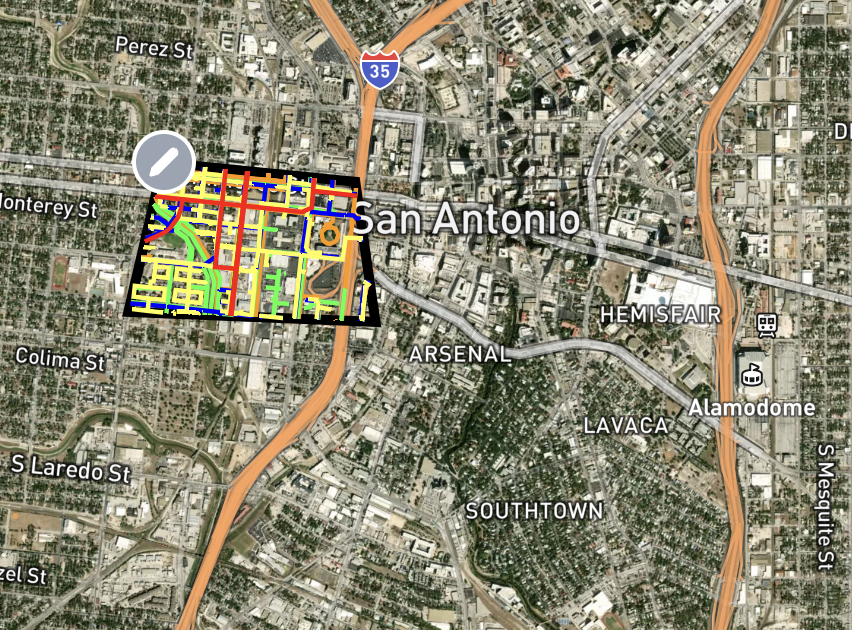
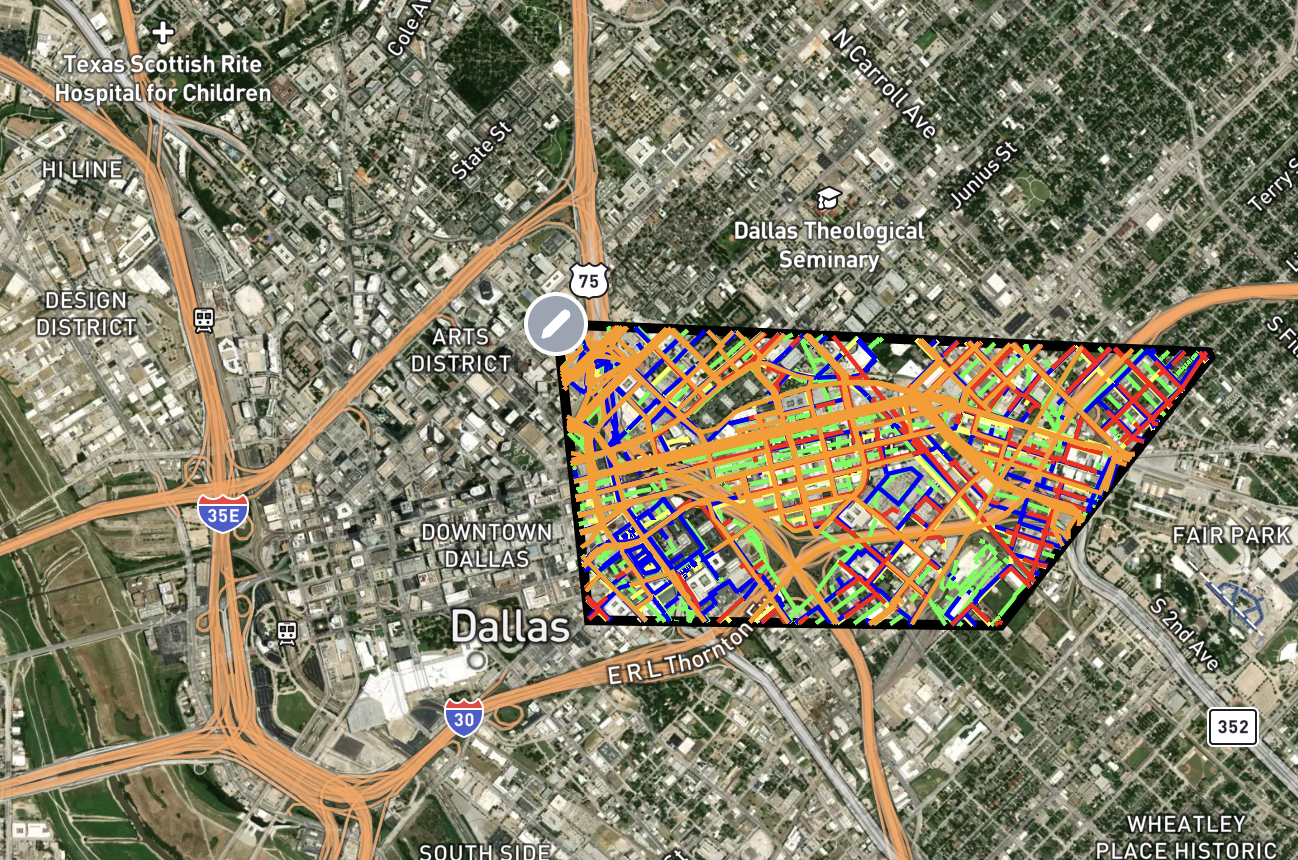
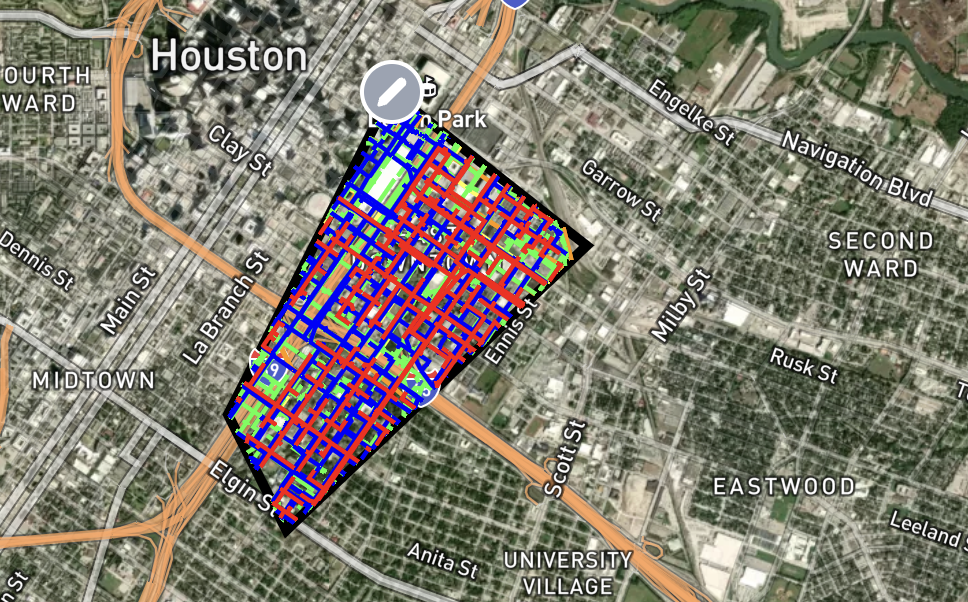
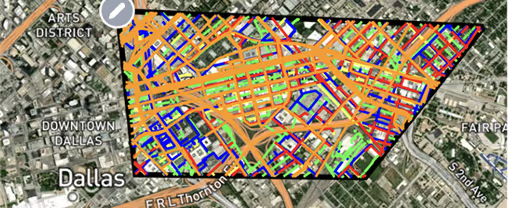

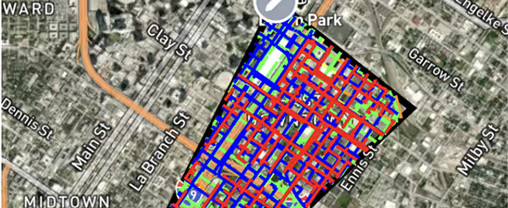
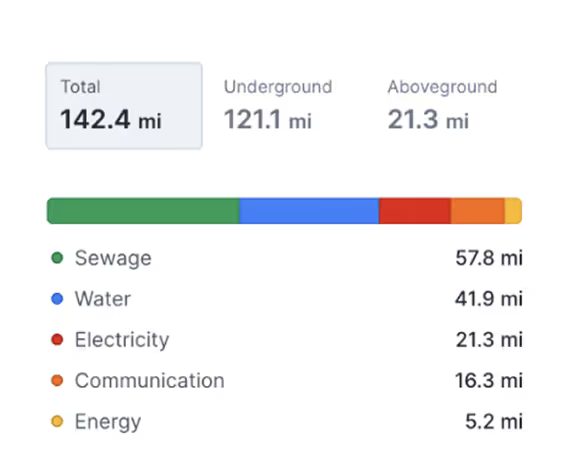
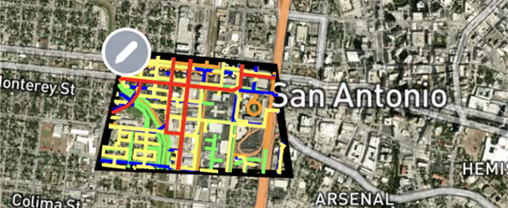
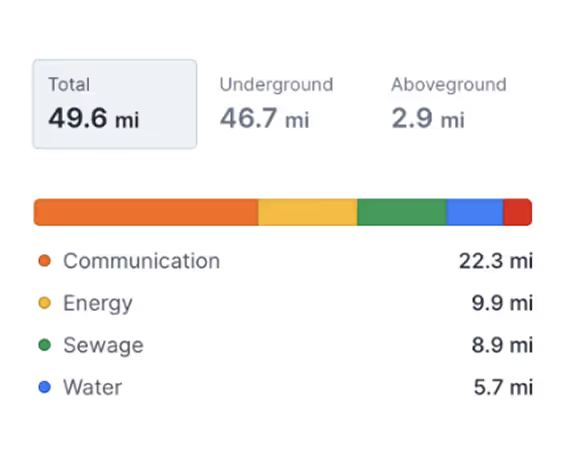

.avif)
